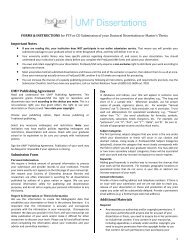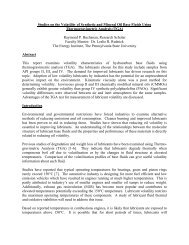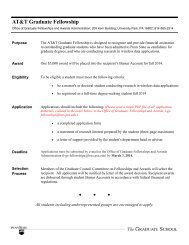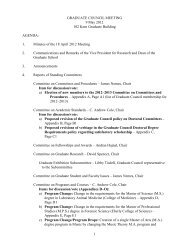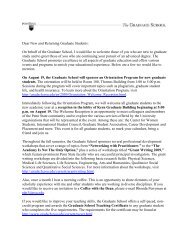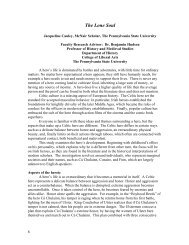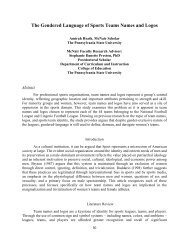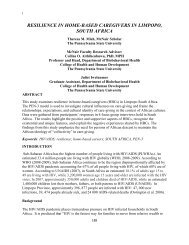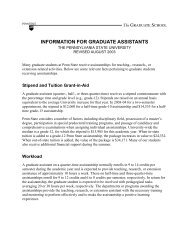bubble pump modeling for solar hot water heater system design
bubble pump modeling for solar hot water heater system design
bubble pump modeling for solar hot water heater system design
You also want an ePaper? Increase the reach of your titles
YUMPU automatically turns print PDFs into web optimized ePapers that Google loves.
[24a]<br />
[24b]<br />
Bubbly flow then occurs when the Taylor <strong>bubble</strong> outruns the gas <strong>bubble</strong>s and thus the smaller<br />
<strong>bubble</strong>: or . In this case the correlations <strong>for</strong> bubbly flow are:<br />
Slug flow occurs when the vapor <strong>bubble</strong>s run into the back of the <strong>for</strong>ming Taylor <strong>bubble</strong>, thus<br />
, and then the previous correlations <strong>for</strong> C 0 and V gj can be used.<br />
For the transition from slug flow to churn, the procedure from Hewitt (1965) was followed.<br />
Hewitt found that the transition between slug flow and churn flow could be predicted <strong>for</strong> a<br />
particular <strong>system</strong> using the following set of equatins:<br />
Where<br />
and<br />
[25]<br />
[26]<br />
[27]<br />
White (2001) found that slug-churn transition occurred at a value of 0.83 <strong>for</strong><br />
<strong>bubble</strong> <strong>pump</strong> <strong>system</strong>. The equations then used <strong>for</strong> churn flow were (Hasan,1987):<br />
in a similar<br />
The working fluid used in the current study is <strong>water</strong>. The SHWS modeled runs under a vacuum<br />
pressure of 20-25 inches of mercury. While the model of the <strong>solar</strong> thermal <strong>water</strong> heating<br />
<strong>system</strong>s require a <strong>solar</strong> flat plate panel collector to collect <strong>solar</strong> energy and heat up <strong>water</strong> in the<br />
panel, it is assumed that the panel is about 50% efficient and can collect a theoretical heat input<br />
of 700W/m 2 from a standard 3 m 2 panel, and the temperature of the fluid entering the lift tube is<br />
at the saturated temperature under these pressure and heat flux conditions.<br />
The efficiency of the <strong>solar</strong> thermal <strong>system</strong> is measured by the mass flow rate of the <strong>hot</strong> <strong>water</strong><br />
output of the <strong>bubble</strong> <strong>pump</strong> as the input to the <strong>system</strong> is free <strong>solar</strong> thermal energy. The minimum<br />
<strong>hot</strong> <strong>water</strong> mass flow rate output requirement from the <strong>bubble</strong> <strong>pump</strong> is 1 liter per minute <strong>for</strong> two<br />
lift tubes.<br />
[28]<br />
181



